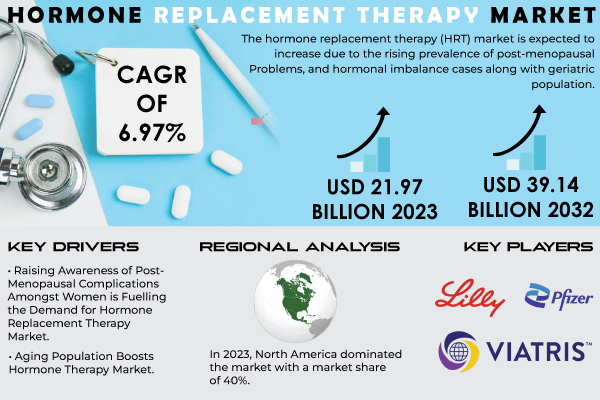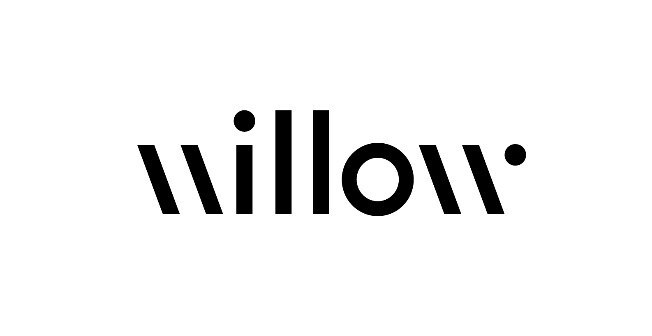Pune, July 12, 2024 (GLOBE NEWSWIRE) -- The hormone replacement therapy (HRT) market is driven by factors such as the increasing prevalence of target diseases, along with the rising availability of long-acting hGH products. The American Thyroid Association estimates about 12.0% of the population in the United States would have thyroid disease in some form throughout their lives.
The majority of companies are joining the race to develop novel treatments, which is the reason why we're seeing new medical products launched so often. As an example, this included the European Commission granting marketing authorization to Ascendis Pharma for SKYTROFA in January 2022, which is indicated as a treatment for children and adolescents with growth hormone disorders. The product is the first weekly treatment for growth hormone deficiency in children and adolescents.

Hence, all these factors are skyrocketing the growth of the hormone replacement therapy market. In 2023, Based on product, the estrogen and progesterone replacement therapy segment held a maximum market share of 54.55%.
The dominance was explained by an increase in the number of women experiencing menopause. The American Congress of Obstetricians and Gynaecologists reports that daily, some 6,000 women in the U.S.
go into menopause. The parathyroid hormone replacement segment, by product, is expected to reach the fastest CAGR during the forecast period due to increasing incidence as well as rising product penetration. Approximately 70,000 people in the US have hypoparathyroidism according to a National Organization for Rare Disease database as of 2021.
Only one product is approved in the Parathyroid hormone segment, i.e. Natpara.
Based on route type, the parenteral segment is estimated to grow lucratively from 2024-2032. The introduction of parenteral modes such as pen-based drug delivery is expected to improve patient compliance and ease of administration for the segment. North America was the largest market in 2023 in global hormone replacement therapy accounting for 40% as due to major product launches, inking of collaborative agreements between manufacturers, and favorable reimbursement policies which account for the highest market share from this region.
For example, in August 2020 US FDA approved Sogroya (somapacitan-beco), which is the recombinant form of human growth hormone for HGH replacement therapy developed by Novo Nordisk A/S that hails it as a once-weekly treatment given subcutaneously to adults with GHD. Asia Pacific is projected to be the fastest-growing region during the forecast period According to a report in the May 2022 Journal of The North American Menopause Society, vasomotor symptoms that are associated with menopausal transition have been experienced by 43%-83% of women living in East Asia. Consequently, an increasing number of women who are approaching menopause is anticipated to boost the demand for hormone replacement therapy in APAC.
1. Introduction 2. Industry Flowchart 3.
Research Methodology 4. Market Dynamics 4.1 Drivers 4.
2 Restraints 4.3 Opportunities 4.4 Challenges 5.
Porter’s 5 Forces Model 6. Pest Analysis 7. Hormone Replacement Therapy Market Segmentation, By Product 8.
Hormone Replacement Therapy Market Segmentation, By Route of Administration 9. Hormone Replacement Therapy Market Segmentation, By Disease Type 10. Regional Analysis 11.
Company Profiles 12. Competitive Landscape 13. Use Case and Best Practices 14.
Conclusion is one of the leading market research and consulting agencies that dominates the market research industry globally. Our company's aim is to give clients the knowledge they require in order to function in changing circumstances. In order to give you current, accurate market data, consumer insights, and opinions so that you can make decisions with confidence, we employ a variety of techniques, including surveys, video talks, and focus groups around the world.
.


















